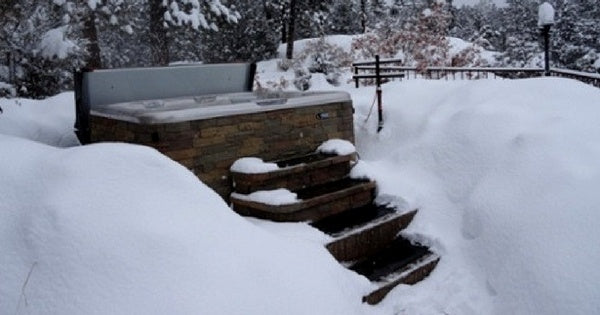
It’s that time of year again…
The snow is here, falling peacefully and beginning to gather in piles around your home.
It’s a beautiful scene to watch from inside the comfort of your home, until you start thinking about what needs to be done with those gathering piles. Suddenly, the memories of last year’s back pain come flooding in and the idea of shoveling all that snow starts to feel more and more dreadful.
Shoveling snow, and lots of it, is simply a part of life when you live with it. However, there’s got to be a better way so that you can avoid the fatigue and back strain that plague so many of us this time of year. In fact, many of the back injuries that occur during the winter season, including low back strain, vertebral damage and even spinal fractures are a direct result of shoveling snow.
This post will share some specific tips on how to shovel snow without hurting your back, including finding the best shovel and using it correctly.
Tip #1: Get warmed up
Warm muscles work much better than cold ones do and are far less prone to injury. Bringing blood flow into the muscle group you’re about to use will not only help prevent tears and strains, it will also help you function more effectively.
Warming up can be very simple. Just five to ten minutes of getting your blood moving with some type of whole-body movement, such as briskly walking or marching in place, can make a big difference when it comes to how you feel after you’re done shoveling.
Once you’re warmed up, adding a few stretches to your pre-shoveling routine could be highly beneficial when it comes to preventing back strain. Consider gently bending forward at the waist, keeping your legs straight, and letting your hands hang down toward your toes and the floor until you feel a gentle stretch in your lower back. Be sure not “bounce” in your stretch and to hold it for 30-60 seconds to get the most out of it.
Tip #2: Pick the right shovel
When you’re shopping for your next snow shovel, look for one with an ergonomic handle which is typically curved. Most hardware stores will carry these types of shovels and they’ll be identified as “ergonomic”.
Also consider using a shovel with a plastic blade versus a metal one as plastic will be lighter and easier on your lower back. Along those same lines, a shovel with a smaller blade will mean a lighter load of snow, which is preferable even if a few more shovels-full are required.
Tip #3: Use back-friendly techniques
Here are some strategies to protect your back from strain while shoveling:
- Don’t place your hands too close together on the shovel. Put some distance between them to create more leverage.
- Face your task head on: Face toward what you’ll be lifting, keeping your shoulders and hips forward and your feet shoulder width apart.
- Bend at your hips and knees, not at your lower back.
- As you lift your full shovel, tighten your stomach muscles for increased stability and lift with your legs.
- When you’ve got a shovel full of snow to dump, keep one hand as close to the blade as possible and the other on the handle to maintain leverage.
- Keep the weight of a full blade of snow close to your body until you’re ready to dump it (versus extending your arms out away from your body). When you’re ready, move your feet and pivot to where you’ll be dumping your snow to avoid twisting at the waist.
- Don’t toss snow or throw it over your shoulder, walk it to where you’ll be dumping it instead.
Tip #4: Pace yourself
Try to tackle your snow a bit at time rather than in one long session of shoveling. If you’re able, spread things out over the course of a few days or shovel for period of time, take a break, then get back to it. You can use these breaks to stretch and keep your body limber while resting up for your next round of shoveling. This will not only help ward off fatigue but will help prevent injury from overuse.
Lastly, if you feel any sudden pain or discomfort in your lower back stop shoveling. Take a break and assess whether you should continue or not and remember that when it comes to injuring your lower back it’s best to err on the side of caution!
Tip #5: Get to it as soon as you can
Fresh snow is much lighter than snow that’s been sitting, so if it’s possible clear your snow as soon as you can. Lighter shovels-full of snow will mean less strain on your back, so it’s definitely worth it to stay on top those piles before they get too big.
So, there you have it: 5 simple, actionable ways you can protect your lower back from strain this season. Putting these into practice will help prevent new injuries as well as prevent exacerbating any existing ones.
Lastly, while it can feel great to get outside, get moving and feel productive, remember that you have other options as well: the neighbor kid, a snow blower (although these are still fairly heavy and can put strain on your lower back also), or the use of heated floor mats. Whichever route you choose, enjoy a safe and injury-free winter season.

